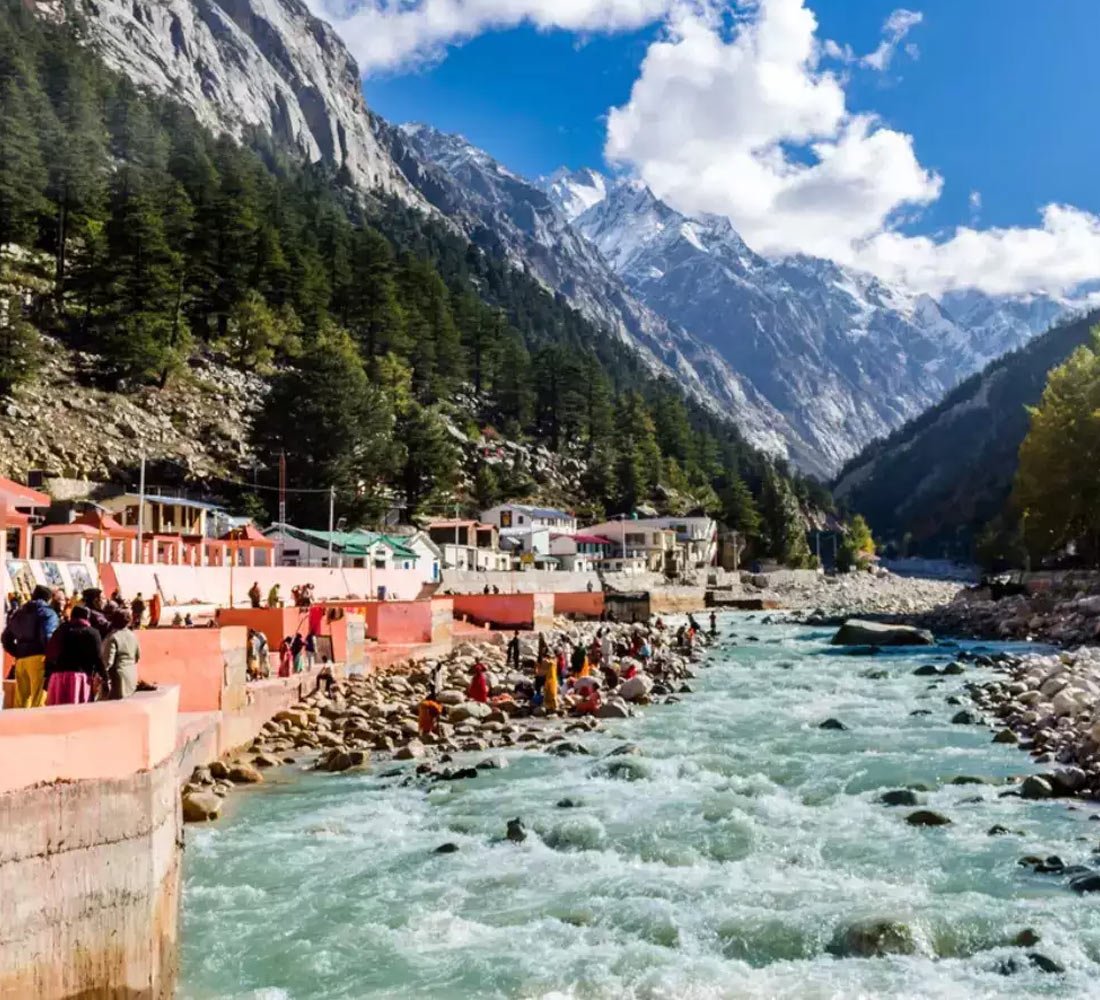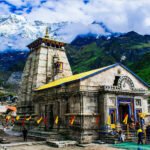Gangotri Tour: The Sacred Origin of the Ganges River
Gangotri is a revered pilgrimage destination nestled in the Uttarkashi district of Uttarakhand, India. As one of the four sacred sites comprising the Char Dham Yatra—alongside Yamunotri, Kedarnath, and Badrinath—Gangotri attracts countless devotees and adventurers alike. Located at an altitude of 3,100 meters (10,200 feet) above sea level, this spiritual hub offers breathtaking natural beauty, surrounded by the towering peaks of the Garhwal Himalayas and lush deodar forests.
Historical and Mythological Significance
The Gangotri tour is deeply rooted in the mythology surrounding the Ganges River, regarded as the holiest river in Hinduism. According to legend, the Ganga descended from the heavens to absolve the sins of King Bhagirath’s ancestors. This tale narrates King Bhagirath’s intense penance to bring the sacred river to Earth for the purification of his cursed ancestors. Lord Shiva, moved by his devotion, agreed to contain the river’s mighty force in his matted locks and gently release it at Gangotri, marking it as the physical source of the Ganges.
At the heart of Gangotri lies the Gangotri Temple, dedicated to Goddess Ganga, which marks the spot where the river is believed to have first touched the earth. Constructed in the early 18th century by Gorkha General Amar Singh Thapa, the temple boasts a simple yet elegant architectural style of white marble, overlooking the rushing waters of the Bhagirathi River, recognized as the headstream of the Ganges.
Gangotri Temple and Pilgrimage
The Gangotri Temple serves as the focal point for pilgrims embarking on their Gangotri tour. The temple opens annually in late April or early May on the auspicious day of Akshaya Tritiya and closes on Yama Dwitiya (the second day after Diwali) in October or November due to severe winter conditions. During the winter months, the idol of Goddess Ganga is relocated to Mukhba, a nearby village, where it is worshipped until the temple reopens.
Visitors engage in rituals, prayers, and aarti (a Hindu worship ceremony) to seek blessings from the Goddess. Many pilgrims also take a holy dip in the frigid waters of the Bhagirathi River at Gangotri Ghat (the bathing steps near the temple) to cleanse themselves of sins and achieve spiritual purification. The river’s waters are believed to possess divine healing properties and are considered the purest among all rivers in India.
The Trek to Gaumukh
For adventurous souls, the trek to Gaumukh, the actual source of the Bhagirathi River, is a highly rewarding experience. Located about 19 kilometers from Gangotri, Gaumukh, meaning “cow’s mouth,” is a glacier sitting at an altitude of around 4,000 meters (13,200 feet). The trek follows a well-defined path through Gangotri National Park, a pristine area rich in diverse flora and fauna, including Himalayan blue sheep, ibex, and snow leopards.
Starting from Gangotri, the trek navigates along the Bhagirathi River, traversing lush meadows, dense forests, and rugged terrain. While challenging, the journey rewards trekkers with stunning views of the surrounding Himalayan peaks, including Shivling, Bhagirathi, and Sudarshan. Upon reaching Gaumukh, trekkers are greeted with a spectacular view of the glacier and the holy waters of the Bhagirathi emerging from its snout.
**Best Time to Visit Gangotri**
The ideal time for a Gangotri tour is during the summer months of May to June and the post-monsoon period of September to October. During these times, the weather is generally pleasant, with clear skies and moderate temperatures, perfect for trekking and pilgrimage activities. The monsoon season from July to August is best avoided due to risks of landslides and heavy rainfall, which can make roads and trekking paths treacherous.
Cultural and Spiritual Importance
Gangotri holds profound cultural and spiritual significance in Hinduism. It is regarded as one of the most sacred sites where devotees can connect with the divine and seek spiritual purification. The journey to Gangotri is not merely a physical trek but also a spiritual quest, as pilgrims strive to cleanse their souls and attain moksha (liberation from the cycle of life and death). The serene environment, complemented by the sound of the flowing river and the chanting of prayers, fosters an atmosphere of divine peace and introspection.
Tips for Pilgrims for Gangotri Tour
1. Physical Preparation: Good physical fitness is essential for the trek to Gangotri and Gaumukh. It is advisable to prepare with regular walks, hikes, or cardio exercises before your journey.
2. Acclimatization: To avoid altitude sickness, acclimatize properly by spending a day or two in Gangotri before trekking to Gaumukh.
3. Weather Conditions: The weather in the Himalayas can be unpredictable. Carry warm clothing, rain gear, and sturdy trekking shoes. Even in summer, temperatures can drop significantly, especially at night.
4. Permits: Obtain an entry permit from the Forest Department office in Gangotri to enter Gangotri National Park and trek to Gaumukh. Check the latest guidelines before planning your trek.
5. Accommodation: Basic accommodation options, including guesthouses and lodges, are available in Gangotri. It’s advisable to book in advance during peak pilgrimage season to ensure availability.




